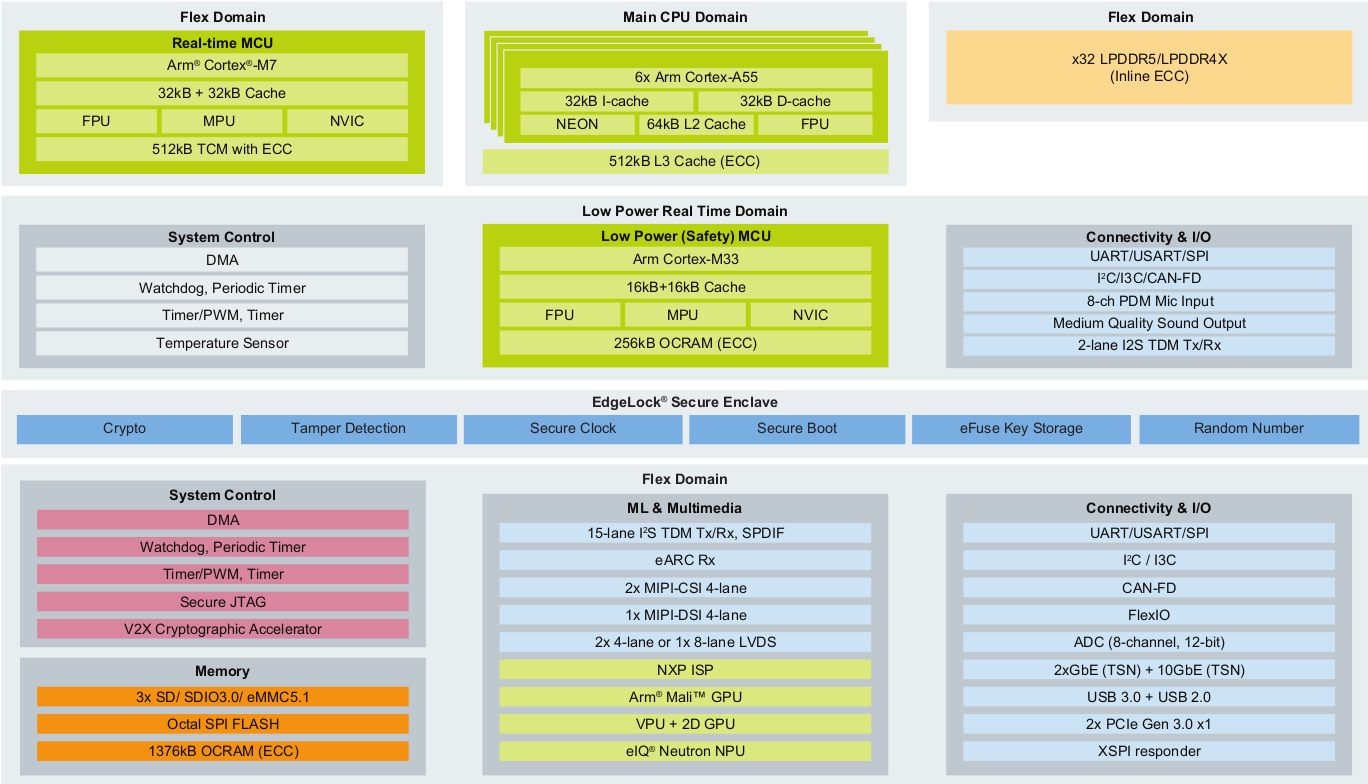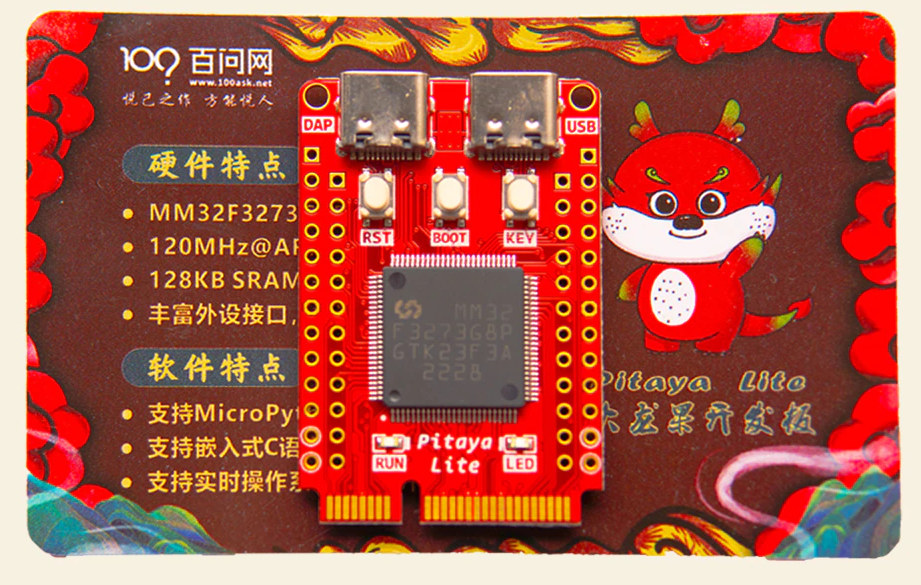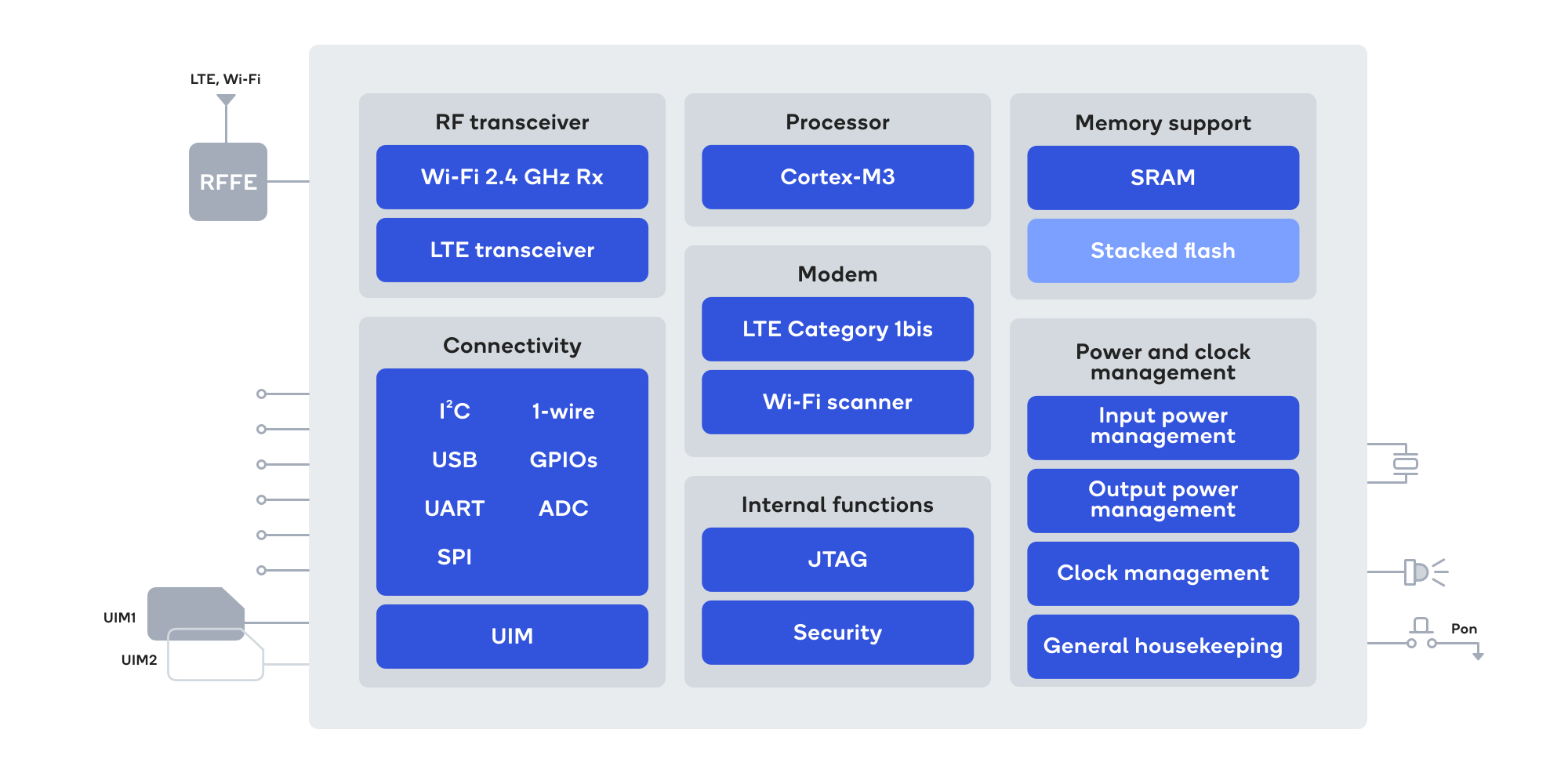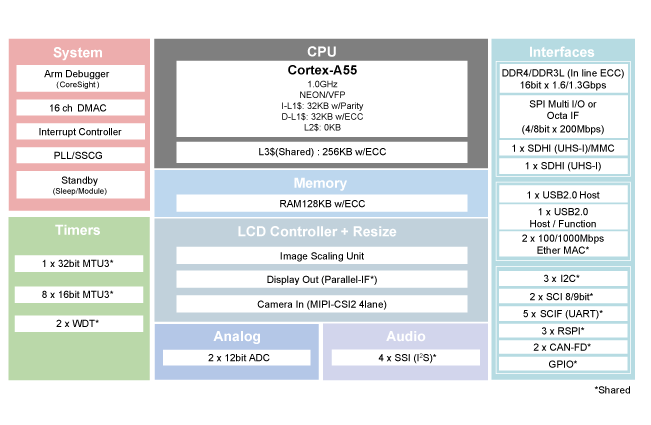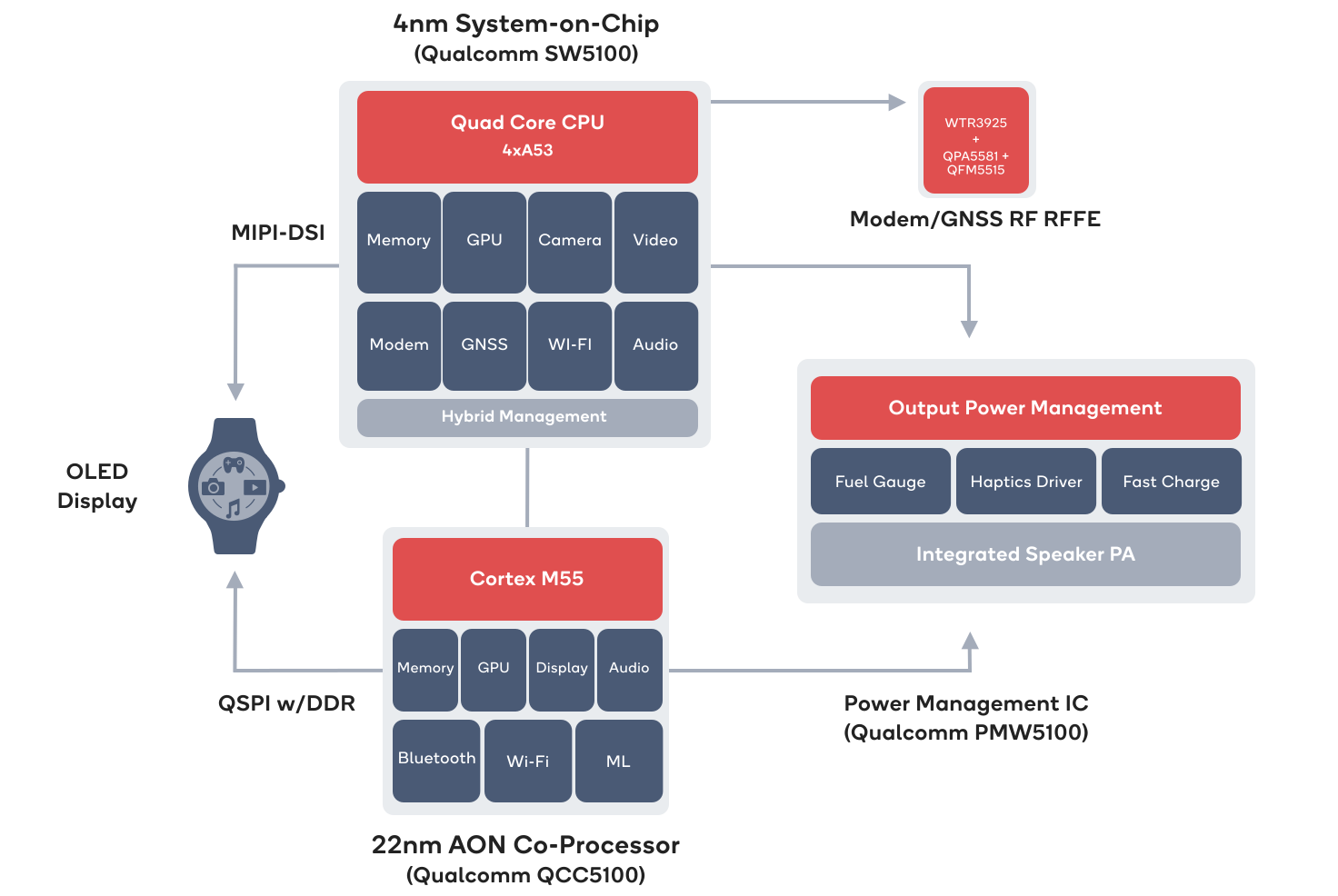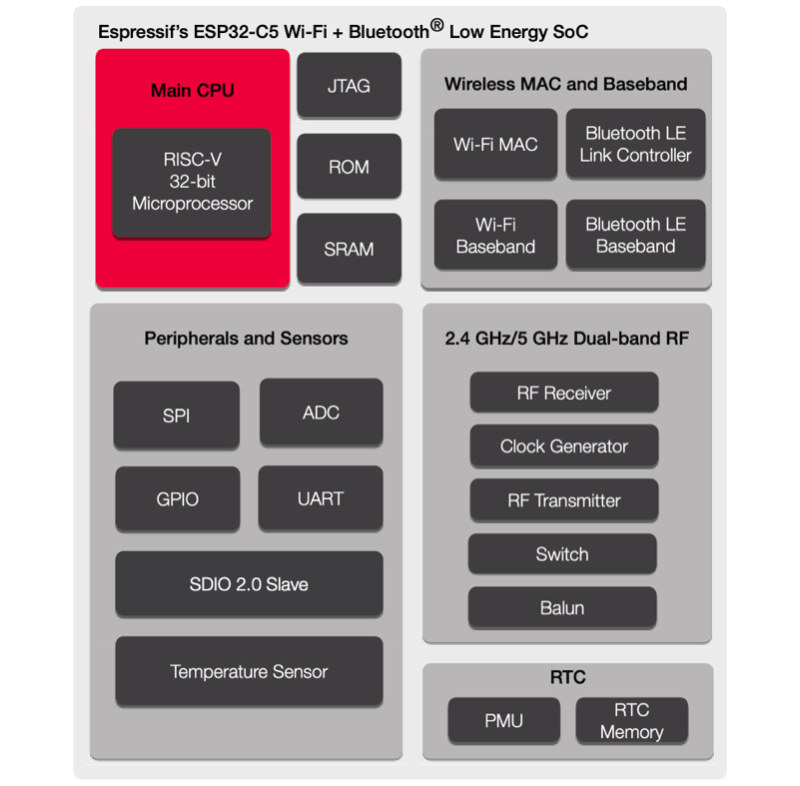NXP i.MX 95 is an upcoming Arm processor family for automotive, industrial, and IoT applications with up to six Cortex-A55 application cores, a Cortex-M33 safety core, a Cortex-M7 real-time core, and NXP eIQ Neutron Neural Network Accelerator (NPU). We’re just only starting to see NXP i.MX 93 modules from companies like iWave Systems and Forlinx, but NXP is already working on its second i.MX 9 processor family with the i.MX 95 application processor family equipped with a higher number of Cortex-A55 cores, an Arm Mali 3D GPU, NXP SafeAssure functional safety, 10GbE, support for TSN, and the company’s eIQ Neutron Neural Processing Unit (NPU) to enable machine learning applications. NXP i.MX 95 specifications: CPU Up to 6x Arm Cortex-A55 cores with 32KB I-cache, 32KB D-cache, 64KB L2 cache, 512KB L3 cache with ECC 1x Arm Corex-M7 real-time core with 32KB I-cache, 32KB D-cache, 512KB TCM with ECC 1x Arm Cortex-M33 […]
$4 DshanMCU Pitaya Lite board comes with MM32 Arm Cortex-M3 microcontroller
DshanMCU Pitaya Lite is an MCU development board based on yet another STM32 alternative: MindMotion MM32 Arm Cortex-M3 microcontroller that is said to be compatible with STM32. The MCU can be clocked at up to 120 MHz, embeds 128KB SRAM, 512KB flash, and the board offers two USB Type-C ports for USB and DAP debugging, a MicroSD card slot, a few buttons, I/Os are routed via through holes as well as a mini PCIe connector that can be used to connect a display. Pitaya Lite specifications: MCU – MindMotion Microelectronics MM32F3273G8P Arm Cortex-M3 microcontroller @ 96MHz (standard) to 120MHz (max) with 128KB SRAM, 512kB Flash; LQFP100 package Storage – MicroSD card Display – Via mini PCIe port with FSMC (Flexible Static Memory Controller), supports Intel 8080 LCDs USB – 2x USB Type-C ports, including one for DAPLink and serial access Expansion – 2x 25-pin GPIO headers and Mini PCIe connector […]
Qualcomm QCX216 LTE Cat1 bis IoT-optimized modem integrates WiFi-based terrestrial positioning
Qualcomm QCX216 is a new IoT-optimized LTE Cat1 bis modem with a data rate of up to 10 Mbps at ultra-low power and support for WiFi-based terrestrial positioning thanks to the company’s database of billions of geolocated beacons. LTE Cat1 bis is an update to LTE Cat1 that does not require software and hardware upgrades to the base stations, enables smaller, simpler, and cheaper designs with a single antenna, and delivers higher speeds than LTE Cat M1 typically used in IoT applications. Qualcomm QCX216 LTE IoT modem will be used in smart utility meters, trackers, e-mobility solutions, parking meters, home automation and security equipment, and other location-based solutions. Qualcomm QCX216 specifications: SoC – Qualcomm 216 LTE IoT modem with dual-core Cortex-M3 @ 204 MHz, cellular modem-RF Wireless Cellular Peak Download Speed: 10 Mbps Peak Upload Speed: 5 Mbps Cellular Technology: Rel.14 LTE, Global LTE Cat 1bis Multi SIM: Dual SIM/eSIM […]
DongshanPI-D1s – An Allwinner D1s RISC-V development board designed to teach programming
The DongshanPI-D1s development board is comprised of a soldered-on Allwinner D1s RISC-V system-on-module board (SoM) and a carrier board with two 40-pin headers and a 2.0mm dedicated header. This development board is specifically designed to teach programming with a focus on the RISC-V architecture. The development board was designed by 100ask. They previously designed the Dongshan NeZha STU a development board based on the Allwinner D1. The main difference between the two is that 100ask did not include the Ethernet and HDMI interfaces on the DongshanPI-D1s board. The pinout of the headers is also slightly different because they opted to make the headers compatible with the widely used 40-pin GPIO from Raspberry Pi single board computers. DongshanPI-D1s preliminary specifications: D1s Core Lite SoC – Allwinner D1s single-core XuanTie C906 64-bit RISC-V processor @ 1.0 GHz with with 32 KB I-cache + 32 KB D-cache Memory – 64 MB DDR2 (SIP) […]
Renesas RZ/A3UL Cortex-A55 CPU runs RTOS for HMI with quick startup times
Renesas RZ/A3UL is a single-core Cortex-A55 processor clocked at up to 1 GHz designed to run FreeRTOS or Azure RTOS on high-definition (1280×800) HMI solutions requiring quick startup times such as industrial equipment, home appliances, office automation equipment, audio equipment, and POS terminals. The new RZ/A3UL processor family has the same peripheral functions and package pin assignments as the RZ/G2UL (Arm Cortex-A55/M33) and RZ/Five (RISC-V) families targeting Linux-based HMI applications. Renesas also designed a SMARC 2.1 compliant System-on-Module (SoM) based on the Renesas RZ/A3UL microprocessor to speed up time to market. Renesas RS/A3UL specifications: CPU – Single-core Arm Cortex-A55 processor @ up to 1.0 GHz with 32KB I-cache with parity, 32KB D-cache with ECC, 256KB L3 cache with ECC Internal Memory – 128KB SRAM with ECC Memory & Storage I/F 16-bit DDR4-1600 or DDR3L-1333 memory interfaces with in-line ECC; up to 4GB RAM Octal Peripheral Interface (OPI) for flash or […]
Qualcomm Snapdragon W5+ and W5 wearables platforms promise higher efficiency and performance
It’s been a while since Qualcomm released a new platform for wearables. More exactly, the Snapdragon 4100 platform was announced a little over two years ago, and now Qualcomm has just introduced the Snapdragon W5+ and W5 Gen 1 platforms with up to 50% longer battery, twice the performance, and 30 percent smaller size. Just like the Snapdragon 4100, the Snapdragon W5 comes with four Arm Cortex-A53 processor (SW5100), but is clocked at 1.7 GHz and manufactured with a 4nm process, while the always-on (AON) co-processor is upgraded from a Cortex-M0 chip to the QCC5100 Cortex-M55 chip manufactured with a 22nm process. Snapdragon W5+/W5 specifications: W5100 SoC CPU – Quad-core Cortex-A53 processor @ up to 1.7 GHz GPU – Qualcomm Adreno A702 @ up to 1 GHz with OpenGL ES 3.1 API support DSP – Qualcomm Hexagon DSP V66K System Memory – 16-bit LPDDR4 up to 2,133 MHz […]
Imagination unveils IMG RTXM-2200 32-bit RISC-V real-time “Catapult” CPU
Imagination IMG RTXM-2200 32-bit RISC-V real-time CPU core is the first member of the company’s Catapult family comprised of four distinct RISC-V families for dynamic microcontrollers, real-time embedded CPUs, high-performance application CPUs, and functionally safe automotive CPUs. The company says it’s a highly scalable real-time, deterministic, 32-bit embedded CPU, that is feature-rich and flexible in design for mainstream devices, but, excuse the pun, leaves most of the details to your imagination… The new core will mostly be used as a helper core (aka co-processor) in more complex SoCs for 5G modems, cellular base stations, networking solutions for data transfer, packet management, and storage controllers, but may also find its way into smart meters. In all fairness, we do have some limited technical details with L1 cache sizes up to 128KB, I/D TCM sizes up to 128KB, and PMA regions. The real-time core will also include optional features such as single-point […]
ESP32-C5 RISC-V IoT MCU supports dual-band WiFi 6, Bluetooth 5.0 LE
Espressif Systems ESP32-C5 is an upcoming wireless RISC-V microcontroller for IoT applications that supports dual-band (2.4 & 5.0 GHz) WiFi 6 connectivity as well as Bluetooth 5.0 LE. It is the first dual-band processor from Espressif, as while the Shanghai-based company previously announced the ESP32-C6 WiFi 6 and Bluetooth 5 LE RISC-V SoC last year, it only supports 2.4 GHz frequency. Note it’s not the first dual-band WiFi 6 IoT chip on the market as NXP introduced the IW612 Wi-Fi 6, Bluetooth 5.2, 802.15.4 tri-radio solution last January, but ESP32-C5 should target different use cases. ESP32-C5 preliminary specifications: CPU – Single-core 32-bit RISC-V processor @ up to 240 MHz Memory – 400KB SRAM on-chip Storage – 384KB of ROM on-chip, support for external flash Connectivity Dual-band 802.11ax WiFi 6 in the 2.4GHz and 5 GHz bands, with 802.11b/g/n WiFi 4 standard support for backward compatibility 20MHz bandwidth for the 802.11ax […]


